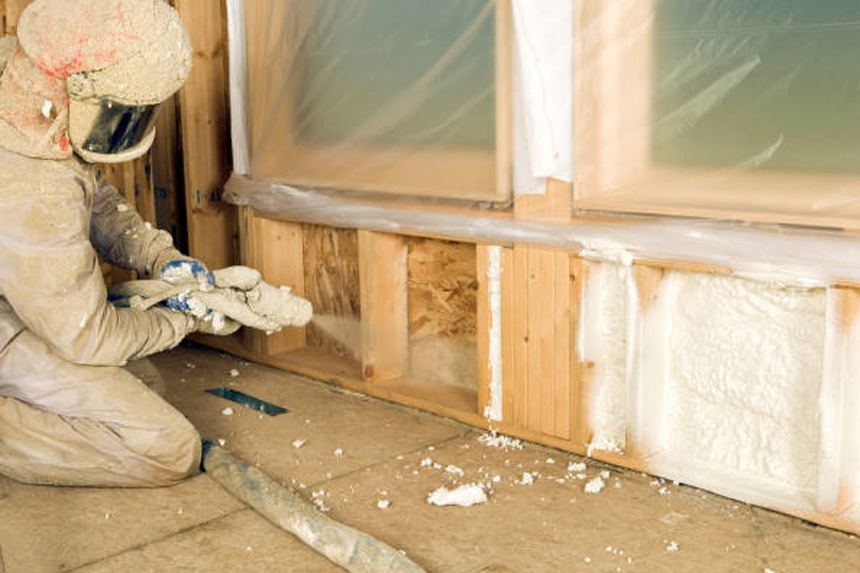Homeowners throughout the UK are complaining, saying they feel “betrayed” and “conned” when they find spray foam insulation put under a government plan, which is now compromising their capacity to sell their houses.
According to studies, a fifth of the top mortgage lenders in the UK need to lend on homes with spray foam insulation in roof areas. Over 160 impacted homes have already come forward with their issues.
Robbie Anderson, 38, from Nottingham, related his experience, saying he felt “taken advantage of” when his house sale fell apart. His property was turned down by possible purchasers’ mortgage providers even though spray foam under the Green Homes Grant scheme, which paid the whole £5,653 cost, was installed under the previous government.
Is it reasonable for housekeepers to cover the expenses?
Robbie was perplexed and annoyed after installing the insulation in 2021 with a Trustmark-approved installer. “I feel it’s unfair that we should pay to have this taken off,” he stated. However, he had documents, including a British Board of Agreement (BVA) certificate, and his buyer’s lender insisted on an insurance-backed installation warranty for ten years rather than the industry-standard two years he had on file.
“We were hoping to get near schools for our daughter,” Robbie said. “Having been quoted £4,000, we now intend to remove the insulation ourselves. [The government] has to answer for it since they forked up for something they believed beneficial.
What is the degree of spread of the problem?
According to experts, about 250,000 houses in the UK have spray foam insulation, most of which were built under the Green Homes Grant, which runs until 2021. The government-sponsored installations aim to increase household energy efficiency for people with specific benefits.
Lenders are cautious, meanwhile, because of worries about inadequate installation and possible moisture entrapment. Some forms of spray foam, especially closed-cell spray foam, block airflow, stress roof timbers, and raise the risk of decay.
Why Are Lenders and Buyers Notified?
Under the Green Homes Grant, Wiltshire resident Philippa, a homeowner, also had spray foam fitted for £8,662. Her lender insisted on extra documentation on the insulation when she turned down an offer from first-time purchasers lately.
“They left before I could supply the paperwork,” Philippa grumbled. “The government has fooled me, in some sense. Spray foam insulation should only be sold once the product is well understood.
Unable to afford removal, Philippa has reduced her price, asking to cover the subsequent purchaser’s expenses. “It’s such a stressful situation and unfair to homeowners who trusted the scheme.”
Which varieties of spray foam insulation are available?
A common approach to cut heat loss has been spray foam insulation for decades. Two categories exist:
Rigid and providing excellent thermal insulation, closed-cell spray foam can retain moisture and harm roof timbers if misapplied.
Although open-cell spray foam stays soft and airy, paired with impermeable underlays like bituminous, it might cause problems.
Independent chartered surveyor Geoff Hunt says, “Properly fitted open-cell foam on a sound roof has yet to be proved connected to degradation. The issue is lenders’ cautious nature, which results in refusals in more high-risk situations.
What Action Politicians and Professionals Demand?
Liberal Democrat MP Tom Gordon responded to the debate by acting. Gordon wrote to Energy Secretary Ed Miliband asking for “decisive action” and financial help for impacted homeowners. “This badly run program is costing constituents unexpected money,” he said. “The government has to help them more actively.”
Head of policy of the National Federation of Builders Rico Wojtulewicz attacked government policy. “An un-mortgageable, unhealthy, or damaged home is a worse outcome than requiring more expensive heating or more retrofitting thought,” he said, pushing government and installation company cooperation.
How is the Government Handling the Problem?
The Department of Housing claims to have “consulted lenders” on spray foam insulation and is depending on the opinions of valuers and surveyors. It underlined that installations under government initiatives must satisfy the highest requirements and that Trustmark-registered installers should fix any problems immediately.
Although spray foam insulation is still offered under the Great British Insulation Scheme run by the government, many householders are starting to doubt its contribution to reaching net-zero targets. Thousands could stay caught until more precise rules and improved monitoring are developed, and they would need more money to afford expensive removal or sell their properties.








